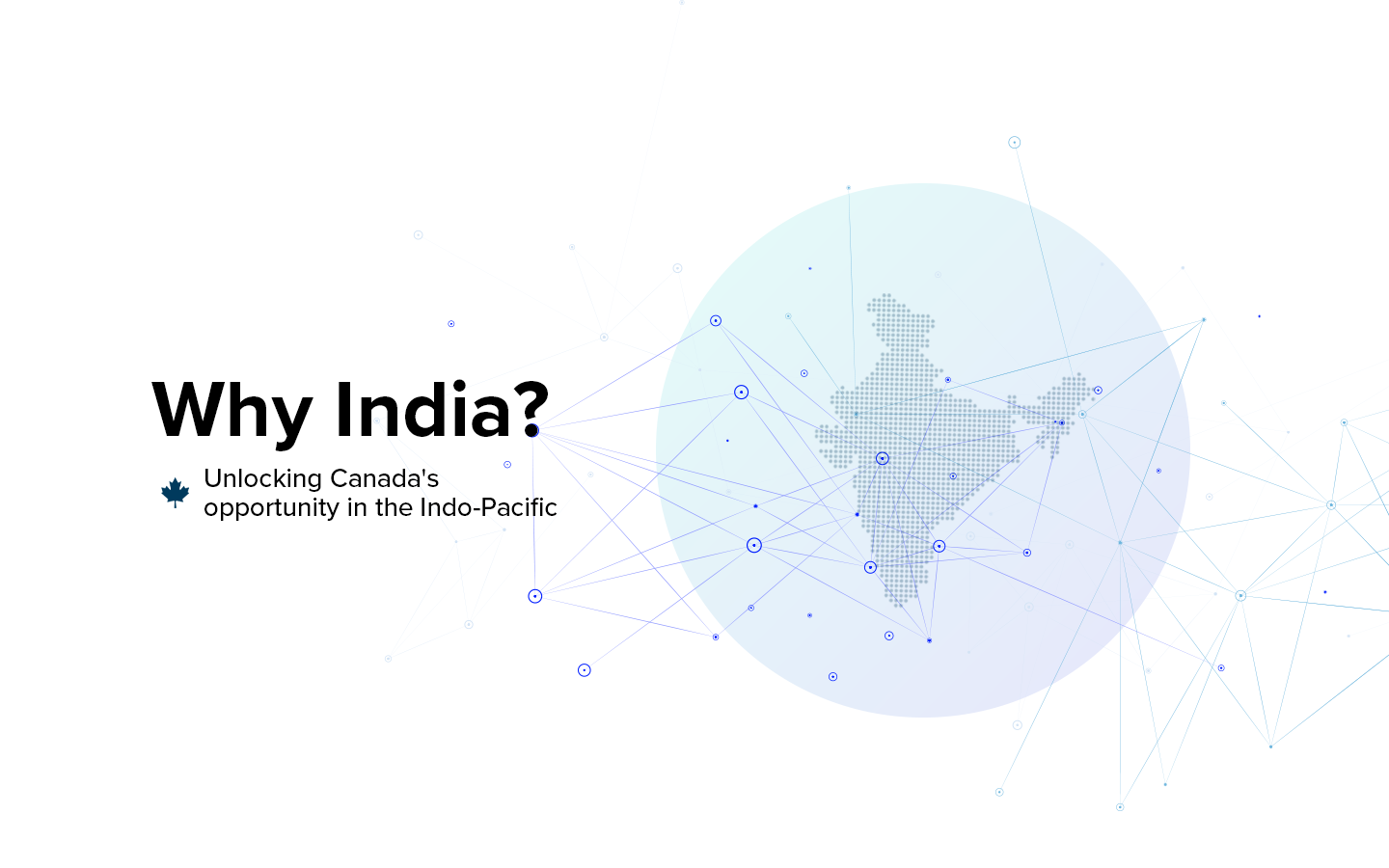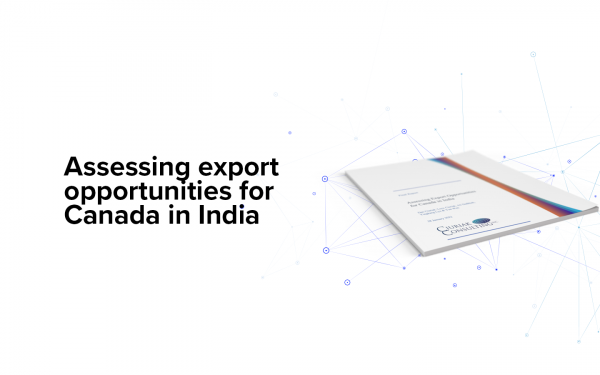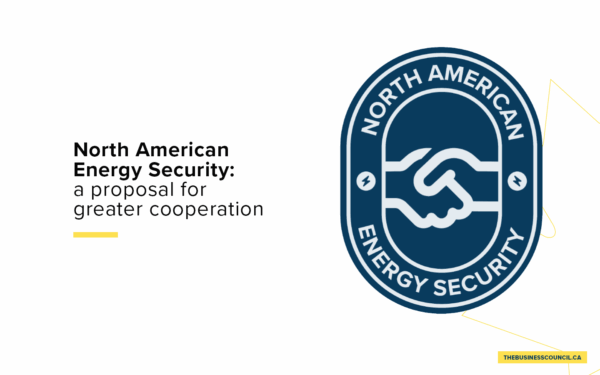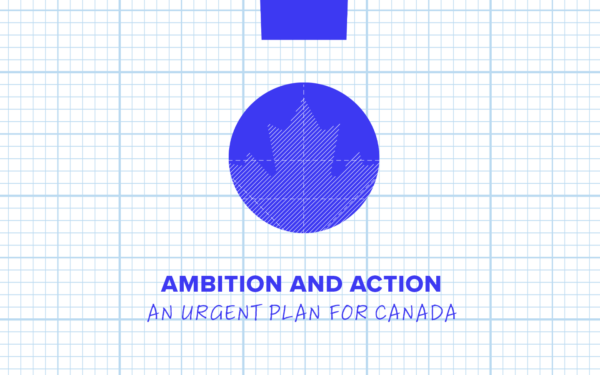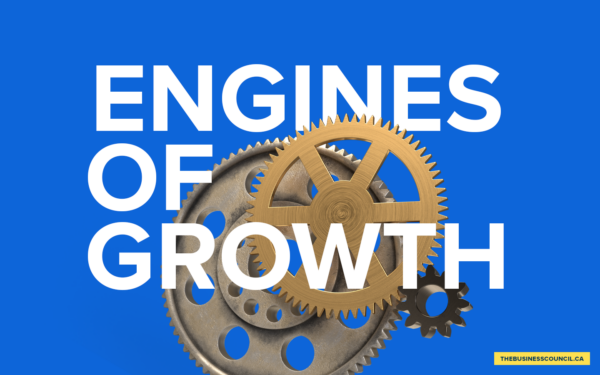Why India?
Unlocking Canada’s opportunity in the Indo-Pacific
Why India and why now?
Canada has an embarrassment of riches when it comes to global trade. It sits next door to the largest market in the world. Thanks to dozens of trade and investment agreements, Canadian goods, services and capital enjoy privileged access to the United States and much of the rest of the world.
Unfortunately, Canadian exporters and investors are not taking full advantage of the wealth of opportunities open to them. For many, India is at best an afterthought.
Why then should Canada work to expand its trade and investment ties with India – a distant and notoriously difficult market to crack?
Simply put: India represents a vital door to the future in global trade. The Canadian government is currently developing its long-awaited strategy for the Indo-Pacific region. And there is no path to achieving success in this massive and strategically important region without building strong and enduring economic ties with India — one of Canada’s last large, untapped trade opportunities.
India is roughly where China was two decades ago. Its economy is in the midst of an economic surge, powered by an explosion of consumer spending, a rapidly expanding middle class and massive investments in infrastructure and digitization.
The future looks even brighter. Economic growth is expected to lift nearly a billion Indians out of poverty in the next five years. That will help propel India — currently the world’s sixth largest economy — to No. 3 by 2030. With 1.4-billion consumers, India is the world’s second most populous country. Its population is on course to overtake that of China by 2027, according to the United Nations. India is also home to 17 of the 20 fastest-growing cities in the world. Over the next three years, India is projected to be the world’s fastest-growing large economy, with real GDP growth well above its peers in Asia, North America and Europe.

In a world buffeted by surging inflation, India offers relatively low labour and land costs. The country is home to the largest working-age population in the world. Half its population is under 25, compared to roughly a quarter in Canada.
And the time is right. In early 2022, Canada and India announced the resumption of talks toward a comprehensive free trade agreement. Both sides are aiming for an “early progress” deal by next year, when India is slated to host the G-20 leaders summit for the first time.
Elected in 2014 on a platform that emphasized domestic economic reforms, Prime Minister Narendra Modi shifted gears in 2021, signaling a new openness to free trade and increased global economic integration. Since then, the Modi government has signed free trade agreements with Australia and the United Arab Emirates, and has embarked on negotiations with the United Kingdom, the European Union, Israel and others.
U.S. President Joe Biden recently launched the Indo-Pacific Economic Framework for Prosperity, an effort to counter China’s growing influence in the region. A dozen other countries, including India, Japan, and Australia, have joined the framework – but not Canada.
Signing a free trade agreement with India would give Canadian companies and investors a leg up over competitors from many other countries. By the same token, failure to act soon would leave Canada at a disadvantage.
India’s economic opening to the world is happening against a backdrop of severe disruptions in global trade caused by the COVID-19 pandemic, Russia’s invasion of Ukraine, and the spectre of a global recession.
Canada has powerful incentives to diversify its trading relationships. The U.S., which accounts for the bulk of our trade, has become more protectionist in recent years – under both Democratic and Republican administrations. And our second largest trading partner, China, has become a much riskier place to do business amid deteriorating bilateral relations.
Canada’s trade performance in India, 2001-2019
At a glance, Canada-India trade appears relatively robust. Goods exports to India grew by an average of nearly 12 per cent a year between 2001 and 2019 – rising to US$3.9-billion from US$517-million. Over the same period, Canada’s goods imports from India rose at an annual pace of nearly 10 per cent. Two-way trade in services has grown even faster, showing a glimmer of what may be possible with freer trade.
These numbers don’t tell the full story, however. India’s growing economy is devouring more imports from around the world. But its trading orbit has been gradually shifting away from North America and Europe. An increasing share of its trade is with China, the UAE, and member countries of the Association of Southeast Asian Nations (ASEAN) such as Indonesia, the Philippines, Singapore and Vietnam.
The result is that Canada has lost market share in the large and rapidly expanding Indian market. An analysis by Ciuriak Consulting (commissioned by the Business Council of Canada and the Canada-India Business Council) shows that Canada’s global share of two-way goods trade with India has eroded from 1.02 per cent in 2001 to 0.81 per cent in 2021. Over the past two decades, Canada has captured just one per cent of the growth in global exports of goods, services and intellectual property destined for India. Bilateral investment is also under-developed, a worrying sign at a time when India is poised for an investment boom.1
“Canada has been punching well below its weight in one of the major global markets,” Ciuriak Consulting concludes.
Canada could, and should, be doing much better. Ciuriak Consulting estimates that if our trade with India was on par with the business we do with similar-sized economies in the rest of the world, our exports would be nearly 2 ½ times higher than now. That represents more than US$3-billion a year in lost export opportunities. Canada’s exports to India of agricultural, agri-food and manufactured goods are all less than half the level they should be, according to the analysis.
This export gap will more than double by 2027 unless Canada does something significant to reverse the trend. By 2035, the shortfall would more than triple. Business as usual is a losing strategy for Canada in this promising and lucrative market.
Calculating the benefits of free trade with India
For Canada, the experience of the past couple of decades in India isn’t necessarily an omen for the future.
That’s because the Canada-India relationship is marked by enormous unexploited potential. The key question is how best to unlock it.
The Canadian and Indian economies are, to a great extent, complementary. Canada needs what India has, including a rapidly growing population of middle-class consumers and a young, IT-literate workforce. In turn, India needs much of what we have: energy, technology, agri-food products, fertilizer, various other natural resources, investment capital, plus engineering and business know-how.
Economic modeling by Ciuriak Consulting suggests that a free trade agreement with India would boost Canadian GDP by 0.16 per cent a year by 2035, assuming relatively modest tariff cuts by India. A more ambitious deal would yield an annual GDP boost of 0.25 per cent. For a Canadian family of four, that represents a gain of C$731 per year. To put this in context, it has the potential to deliver a greater economic boost to Canada than the 2018 Comprehensive and Progressive Agreement for Trans-Pacific Partnership (CPTPP), a deal which has succeeded in strengthening trade ties with 10 other countries in the Asia-Pacific.2
The forecast is predicated on two possible models of a Canada-India free-trade agreement. One is the Regional Comprehensive Economic Partnership (RCEP), a relatively modest China-led trade deal among Asian and Pacific countries that India has so far balked at joining. The second is the more ambitious proposed bilateral deal with Canada, dubbed the Comprehensive Economic Partnership Agreement (CEPA). Negotiations on that deal began in 2010, but later stalled.
A more ambitious CEPA-style deal would boost two-way Canada-India trade by C$8.8-billion a year – more than double what it was 2019.
Four broad Canadian goods export sectors stand to benefit the most from free trade with India: fruit and vegetables; chemicals, rubber and plastics; wood products; and minerals. Canada can also take advantage of the rapidly growing demand in India for business services.
The estimates contained in this report represent a floor for what’s ultimately possible. Canada and India can do much better.
Australia offers a model that Canada can emulate. Australia appears to have achieved significant gains under a bilateral trade agreement signed with the Modi government in April 2022. Australian officials say the deal will remove tariffs on 85 per cent of goods shipped to India in the short term, rising to 91 per cent over the next decade. And it is taking key steps to strengthen ties in other areas. The Australian government has committed to investing $280-million (Australian) in India, including in renewable technology, defence and space cooperation. It has also created the Centre for Australia-India Relations, which has a mandate to promote policy dialogue, build Australian business literacy, engage the Indian diaspora communities, and deepen cultural connections.
India also stands to gain a lot from freer trade. Lowering its own historically high tariffs would make the Indian economy more dynamic and competitive, propelling growth of its own exports. That’s exactly what happened to China after it joined the World Trade Organization in 2001. China dramatically lowered its tariffs, and its exports soared.
Yet forging stronger ties with India won’t come easily.
Yes, Canada and India have relatively complementary economies. They also have growing personal bonds, reinforced by an increase of Indian immigrants and foreign students to Canada over the past two decades. The Indian diaspora in Canada now numbers 1.6-million people, three per cent of the Canadian population. India is now the largest source of landed immigrants in Canada, having overtaken China in 2017.
But India has historically been a difficult place to do business. The country jealously protects sensitive sectors such as agriculture and manufacturing. It’s not just about high tariffs. India’s borders are notoriously “thick,” marked by heavy bureaucracy, regulations and other non-tariff barriers. And even more so than Canada, its internal market is highly fragmented, to the degree that India’s various states sometimes resemble separate countries.
A free trade agreement alone won’t miraculously open up opportunities for Canadian businesses. Canadian policymakers and businesses will need to get out of their comfort zone when it comes to India, and work hard to leverage the full benefits of closer economic ties and market-opening opportunities. That will mean putting capital at risk, investing in local talent, expanding trade facilitation support, and more.
Several Canadian companies are already well established in India, demonstrating that it can be done.
There is opportunity but also urgency in India. Canada’s peers, including the U.K. and Australia, are moving aggressively to secure a trade advantage. Canada has a chance to be right there with them with a trade deal that, done right, could pay economic dividends for decades to come.
Recommendations
Canada has committed to developing a strategy for the entire Indo-Pacific region. Canada also needs a The Government of Canada has recognized the need to articulate a strategy for deeper engagement with the Indo-Pacific region. Equally, Canada needs to develop a comprehensive India strategy. India is pivotal to success in the region because of its large size, rapid economic growth and vast untapped potential.
- Federal government should complete a comprehensive free trade and investment agreement. An “early progress” deal with India will be an important first step in enhancing the relationship, but Canada should not stop there. A comprehensive trade and investment agreement that reduces tariffs and other barriers, increases labour mobility and improves investor confidence would generate significant economic gains for both countries.
- Invest in the India relationship. To demonstrate Canada’s commitment to forging closer ties, federal ministers should commit to visiting India frequently. Ideally such visits and trade missions would be coordinated with provincial, territorial and municipal officials, as well as Canadian business organizations. In addition, Canada should ensure it has talent on the ground, including at the state, territorial and municipal levels, to support this fast-growing relationship. The government should work closely with business groups and companies that are in a position to help open doors in India. It should also collect and share data on the most promising market opportunities for Canadian goods and services.
- Businesses must develop their own India strategies. Just as they did with China 20 years ago, Canadian companies must give serious thought to where India fits into their future plans. India is poised to become the world’s third-largest economy. Every company with global ambitions should have a strategy to seize potential opportunities in India and keep pace with competitors. This could include establishing a presence in India to better understand the challenges and opportunities of the complex and diverse Indian market.
Canadian success stories
More than 600 Canadian companies and organizations have established a presence in India. Hundreds more are actively pursuing business opportunities there. Examples:
CPP Investments
The global investment manager for the Canada Pension Plan opened its first Indian office in Mumbai in 2015. CPP Investments now has more than 70 employees in the country, helping to manage a C$18.5-billion portfolio of real estate, infrastructure, public and private equities, as well as funds, co-investments and credits. These investments represent 3.4% of the fund’s total assets (as of March 31, 2022).
Among its key holdings in India:
- Invested a combined about US$600 million for an approximately 21 per cent stake in ReNew Power Ventures Pvt. Ltd., one of India’s leading clean energy companies with approximately 10.3 gigawatts of capacity diversified across wind, utility-scale solar and rooftop solar power-producing assets.
- In May 2018, L&T Infrastructure Development Projects Limited (L&T IDPL) launched the first private infrastructure investment trust in India – IndInfravit Trust, with an initial portfolio of five operating toll roads which has grown over time. CPP Investments now has a stake of 43.8 per cent.
- Acquired 25 per cent of the units in National Highways Infra Trust, an infrastructure investment trust sponsored by the National Highways Authority of India (NHAI), for INR 15,029 million (C$257 million). The trust acquires brownfield toll roads from NHAI, the government agency responsible for developing, maintaining and managing national highways.
- CPP Investments first invested in Kotak Mahindra Bank Ltd. in 2013 and has subsequently added to the position through a series of share purchases. Kotak is a leading private-sector bank holding company, with additional lines of business in life insurance, brokerage and asset management. To date, CPP Investments has invested C$1.4 billion representing a 4.3 per cent ownership stake in the company.
- Formed three joint ventures with Phoenix Mills. The first – in which CPP Investments invested INR 16.62 billion (C$328 million) – develops, owns and operates retail-led mixed-use developments across India. The second – in which CPP Investments invested INR 5.6 billion (C$93 million) – is to develop a regional retail centre in Alipore, Kolkata. The third – in which CPP Investments invested INR 13.5 billion (C$231 million) – is to develop an office-led mixed-use asset in Mumbai.
- In 2021, invested US$800 million in the Flipkart Group, one of India’s leading digital commerce companies. Flipkart has enabled millions of consumers, sellers, merchants and small businesses to be part of India’s e-commerce revolution.
Canpotex
The potash marketing company, based in Saskatoon, has been exporting Saskatchewan potash to India for half a century. Over that time, Canpotex – owned by producers Nutrien and Mosaic – has sold 25-million tonnes of the fertilizer nutrient to India.
Potash is a vital import for India, particularly as farmers seek to produce higher quality crops and larger yields from limited arable land. Since 2016, Canpotex has invested US$10-million on education programs to help Indian farmers improve soil health by applying a balanced mix of potash, nitrogen and phosphate on their fields.
Memorial University
Based in St. John’s, Memorial University is more than 10,000 kilometres from Mumbai and other major Indian cities, yet it has become the university of choice for hundreds of Indian undergraduate and graduate students. Some 544 Indian students were enrolled at Memorial as of September 2021, up nearly 200 per cent from 2016.
Memorial credits the surge to a special admissions process for Indian high school students, as well as virtual open houses, recruitment trips to India, and growing academic ties with nearly a dozen Indian universities. Several Memorial faculty members are active in the Shastri Indo-Canadian Institute, a bi-national organization that promotes academic exchanges and research partnerships between the two countries.
Teck Resources Ltd.
India has emerged as a key market for Canadian steelmaking coal as India continues to grow its steelmaking capacity, with plans to double production to 240 million tonnes by 2030. As steelmaking capacity grows, so do imports of metallurgical coal as India has limited domestic production and diversifying the locations it imports from is a benefit to India.
To help meet this growing demand, Vancouver-based Teck now exports between 10 to 15 per cent of its production to India; that’s two and a half to four million tonnes of metallurgical coal per year. A dedicated in-house team in concert with a team on the ground oversees Teck’s sales to India.
Teck also has a well-established partnership with UNICEF to support community development in India, including life-saving COVID supports in 2021, and a decade-long Zinc & Health Program. The Zinc & Health Program has reached 23.6 million children under the age of five through integrated awareness campaigns, trained 29,200 female health workers on diarrhea prevention and management, established over 140,000 ORS (oral rehydration salts)-Zinc corners to improve equitable access to ORS and zinc, and oriented 2.67 million people on everyday diarrhea prevention practices.
Endnotes
- Canada had C$2.5 billion invested in India in 2019 accounting for about 1.2% of India’s inward FDI; India’s investment in Canada was C$971 million, accounting for about 0.1% of Canada’s inward direct investment stocks. (Sources: Statistics Canada, 36-10-0008-01; and for shares, UNCTAD estimates; details in Transnational Corporations, vol. 26(1), pages 109-146.
- The CPTPP would generate annual GDP gains of 0.082 per cent, slightly better than the 0.068 per cent gains from an ambitious free trade deal with India, according to estimates by Ciuriak Consulting. But because India has much higher tariffs than most other countries in the region, Canadian exporters stand to generate significantly higher prices for the products they sell there. The resulting price effect tips the economic scales in favour of an India deal, compared to the CPTPP. (Sources: Ciuriak, Dan, Jingliang Xiao and Ali Dadkhah. 2017. “Quantifying the Comprehensive and Progressive Agreement for Trans-Pacific Partnership,” East Asian Economic Review 21(4), December: 343-386. http://dx.doi.org/10.11644/KIEP.EAER.2017.21.4.334. And Ciuriak, Dan, Lucy Ciuriak, Ali Dadkhah, Yingkang Lyu and Yun Wen. 2022. “Assessing Export Opportunities for Canada in India,” Commissioned Report for the Business Council of Canada and the ASEAN-Canada Business Council. https://papers.ssrn.com/abstract=4021609)







